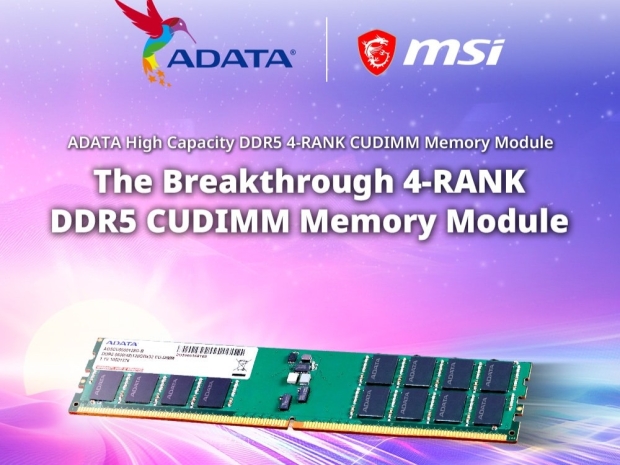MSI and ADATA recently teamed up on an update that bumps today’s CUDIMM design from two-rank to four-rank, pushing capacities to 128GB per module while keeping the fast CKD setup intact. That effectively doubles what platforms can handle and still keeps timings tidy.
Benchlife reckons plenty of other motherboard makers want in on the trick. Gigabyte and ASUS are both working to unlock four-rank DDR5 support on current and upcoming boards. For now, the feature will lurk on pricey overclocking designs such as MSI’s Dual-DIMM Unify X, Gigabyte’s Tachyon ICE and ASUS’s Apex. However, broader support looks inevitable once the standard lands.
JEDEC is behind the shift because it plans to roll out a new CQDIMM spec. CUDIMM handles two-rank CKD while CQDIMM will take four-rank CKD in its stride, with the Q simply standing for quad. CKD modules are expected to hold steady at 7200MT/s, which next-gen platforms will natively support.
Intel's Arrow Lake-S Refresh, due on desktop and laptop platforms early next year, is tipped as the first to use the CQDIMM DDR5 standard. Troubled Chipzilla’s kit will not come cheap, because 128GB modules are expected to cost a small fortune, given today’s memory prices.
Arrow Lake-S Refresh will likely serve as the proving ground for CQDIMM, with wider adoption once prices settle around the Nova Lake-S launch in the second half of 2026. CES 2026 is looming, so more details should drop in the coming weeks.

